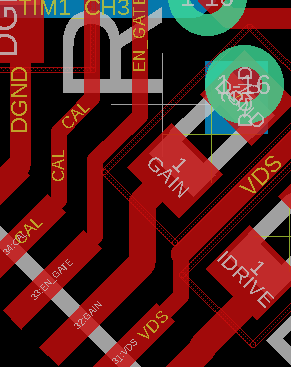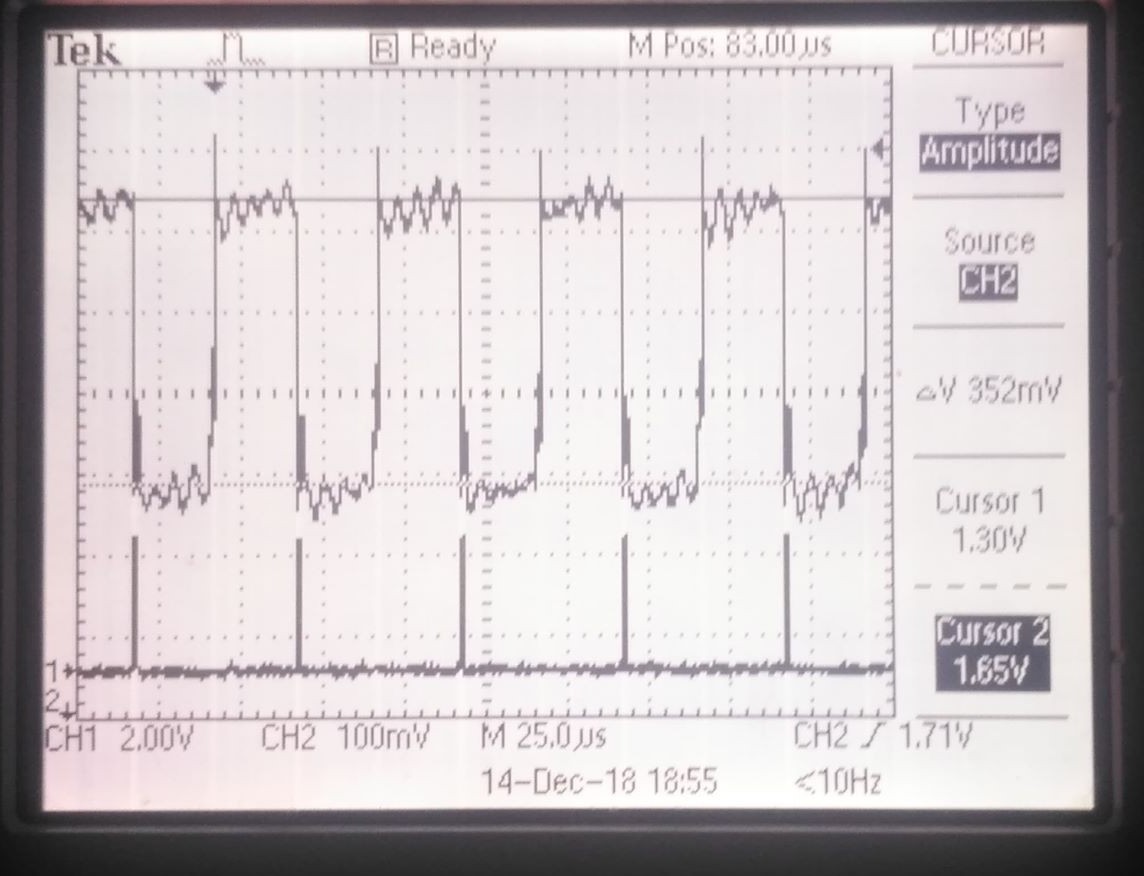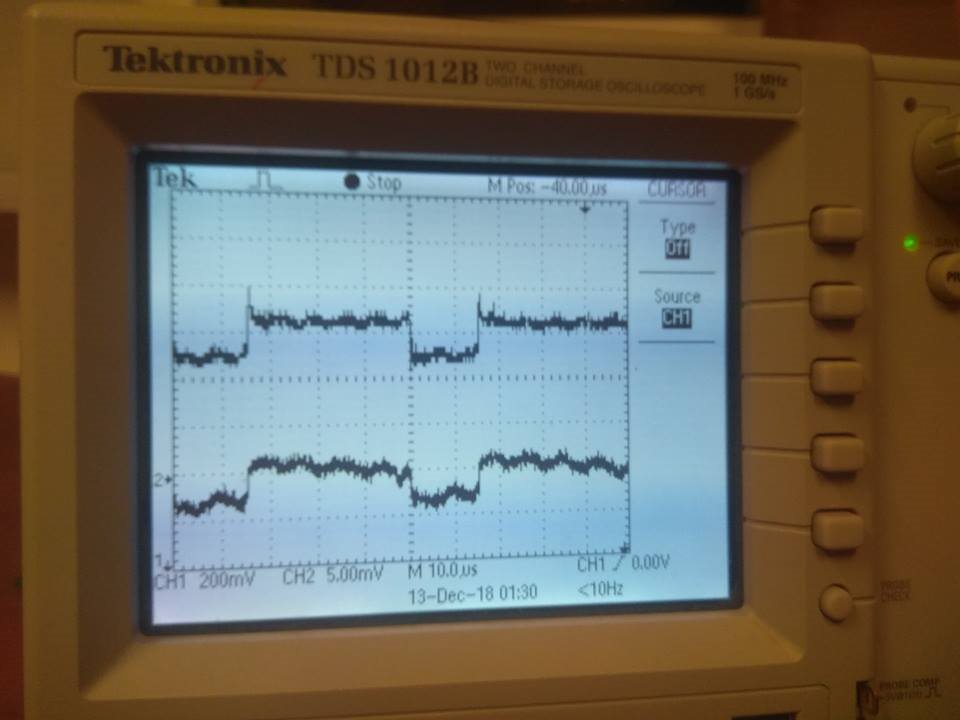Hi,
I try to measure motor phase currents. I'm using DRV8323R, and I choose gain 20 by resistor 1M connected between GAIN pin and ground, like it's descripted in datasheet. Shape of the signal is pretty good, but there is something wrong with signal values. I connected my driver to 12V with 1A current limit. Signal value, like on the photo is 1,3V-so the difference between signal and refence level is 350mV-with gain 20 voltage on the current sense resistor should be 17,5mV. I use 1mohm resistor, so that value means 17,5A-impossible with 1A current limit. What can be reason of that issue? I attach signal from SOB pin from the oscilloscope, and screens from board layout-gain resistor connection and and current sense resistor connection. It seems like opamps gains are other than in the datasheet. I check it on 2 identical boards, and there is the same signal level, so it must be connected with gain resistor value, but I have no idea how. Maybe I badly interpreted datasheet? Gain 20 in DRV8323 can be chosen by Hi-Z from pin to ground, like I have marked on the screen?
Gain resistor
Phase current






